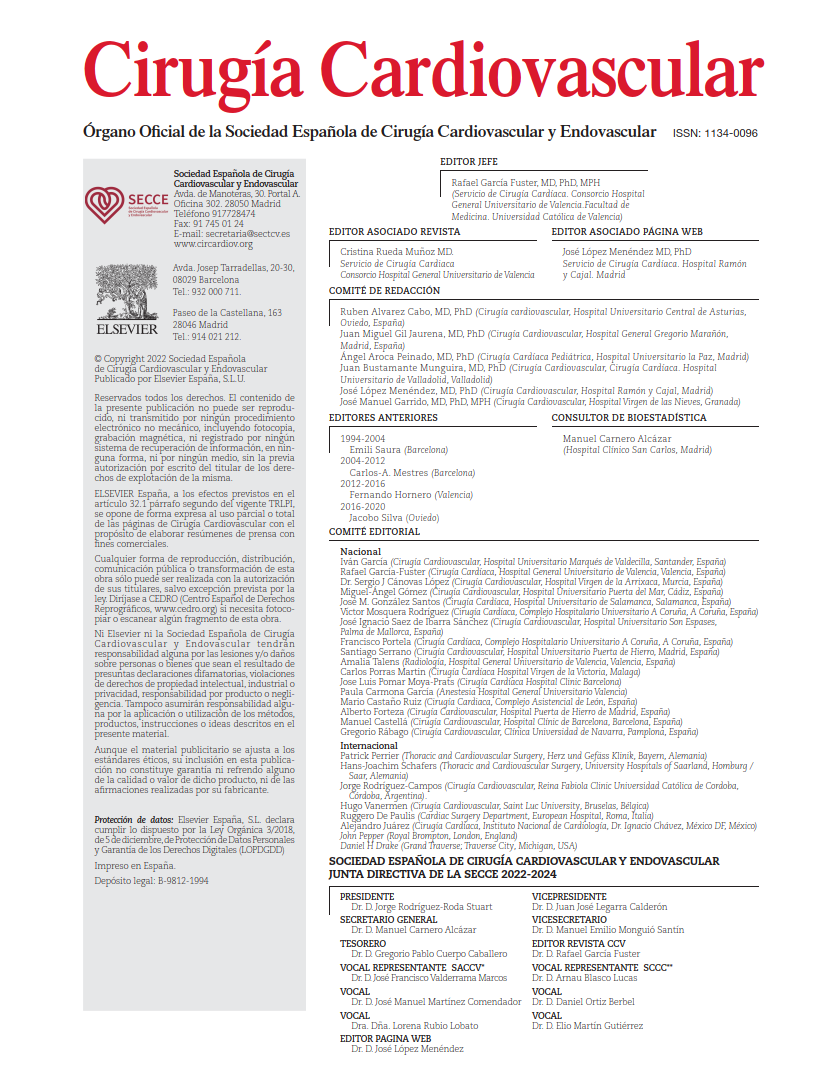
COMMENCE at 7 years: Resilia tissue continues to perform well, though it is not infallible
This report details the 7-year outcomes of the COMMENCE study, which evaluates the results of aortic valve replacement using the Edwards Inspiris RESILIA® prosthesis.
Hypoplastic Left Heart Syndrome: Better a Right Ventricle than None
Review article from JACC on right ventricular adaptation in various phases of correction for hypoplastic left heart syndrome
Coronary artery bypass grafting: grafts, anastomoses, and drugs. How to do it right?
This consensus document compiles the latest evidence on the optimal management of grafts and the different technical options for coronary artery bypass surgery.
Impact of the TRI-SCORE on valve surgery for tricuspid regurgitation
This article examines the impact of the TRI-SCORE on surgical outcomes compared to conservative management for severe functional tricuspid regurgitation. It evaluates survival according to risk categories based on this scoring system using data from the TRIGISTRY registry.
Multiple arterial revascularization through mini-thoracotomy: science fiction or imminent future?
A single-center, prospective five-year experience in multiple arterial revascularization through mini-thoracotomy, exclusively employing arterial grafts. The analysis includes clinical characteristics, adverse events, and short- and mid-term mortality.
Renal impact of Impella CP® use in the DanGer Shock substudy
The DanGer Shock clinical trial substudy analyzes the relationship between the use of the microaxial flow pump (Impella CP®) and renal dysfunction in patients with cardiogenic shock secondary to myocardial infarction.
Implantation of Impella 5.5 devices: revolutionizing survival in cardiogenic shock.
Introduction and Update on Clinical Experience with Impella 5.5 at the Hospital Universitari i Politècnic La Fe
Should current age recommendations for the use of bioprostheses in the mitral position be reconsidered?
A multicenter retrospective study addressing the durability of mitral bioprostheses across different age groups, aiming to determine their longevity and the risk of reintervention in younger patients.

